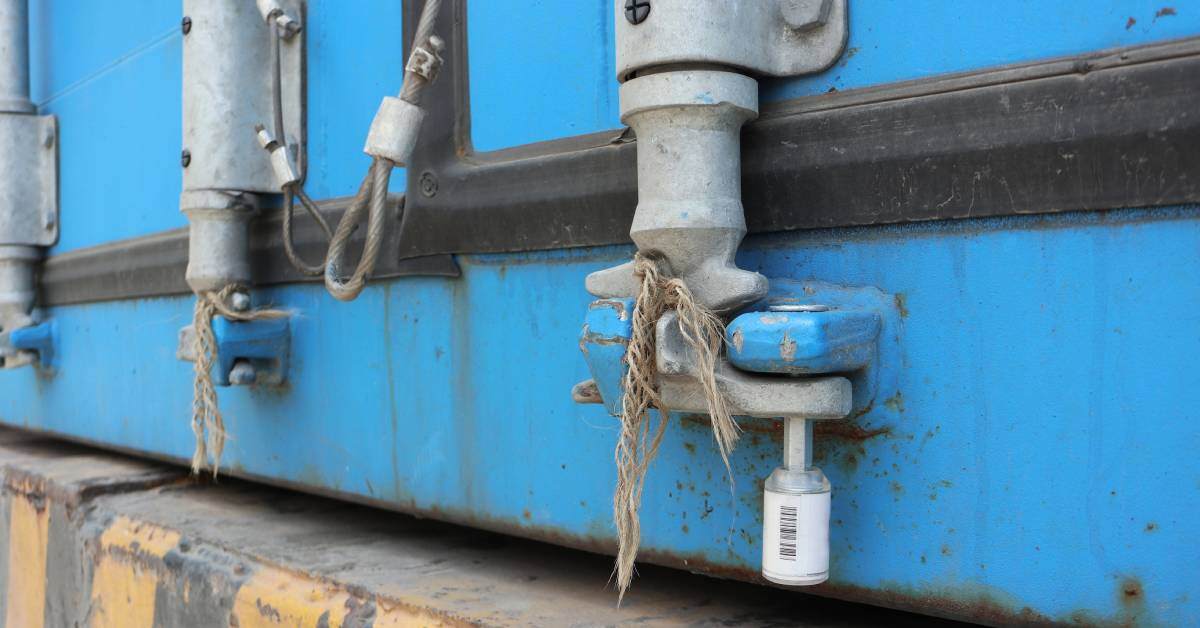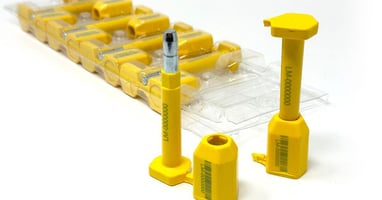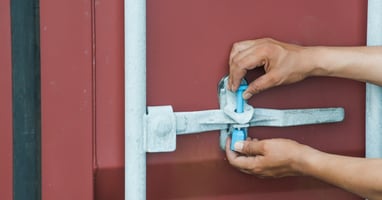To the average person, a warehouse might just seem like a glorified storage space. What most people...
RFID Seals & the Evolution of Advanced Cargo Protection

As companies strive to meet ever-growing consumer demands, they need to streamline supply chains. However, efficiency alone is not sufficient; distribution centers must safeguard the integrity of products during transportation. When a product arrives in pristine condition, untainted by tampering or mishandling, it reinforces the credibility of the supplier and the efficiency of the entire distribution network.
Security seals are the best tools to protect products during transit. Anti-theft detection RFID (radio frequency identification) technology was patented in 1973. Since then, this technology evolved into a modern-day tool to increase the efficiency of transporting goods and decrease the risk of theft.
Every warehouse needs RFID technology. To better understand RFID seals, uncover why they were designed, their benefits, and the evolution of advanced cargo protection.
What Are RFID Security Seals?
RFID security seals combine physical security with radio frequency identification technology. These seals attach to cargo containers, trucks, or other shipment vehicles, serving two primary functions.
First, they act as a tamper-evident device, showing whether unauthorized access occurred. Second, they use an RFID chip to store and transmit data regarding the seal and the container it protects. By doing so, they provide a layer of security and a means to track and monitor shipments in real time.
Why Were RFID Seals Made?
Remove Human Errors
Early logistics operations relied heavily on manual processes, which often led to human errors. Misreporting serial numbers, overlooking tampering signs, or mishandling documentation could easily occur. RFID seals emerged as a solution to these issues, reducing the reliance on human intervention and minimizing the potential for mistakes. Through automating data capture and recording, RFID seals support accurate and reliable information management.
Streamline Processes
RFID seals also play a vital role in streamlining cargo operations. Traditional methods of cargo tracking involved manual inspections and paperwork. RFID helped workers produce quick results with automated scanning that would free up resources for other important tasks. With RFID seals, warehouse teams experience smoother and faster operations.
Locate Shipments in Transit
RFID technology locates shipments in transit with great precision. Logistics personnel can easily identify cargo locations in real time for increased visibility in the supply chain. It also allows for proactive decision-making to avert potential delays or issues.
What Did the First Basic RFID Model Feature?
The first basic RFID model featured a simple yet effective design. It included a basic RFID tag embedded within a tamper-evident seal. When scanned by an RFID reader, the tag transmitted a unique identification number, which operators could record and track. While rudimentary compared to today’s standards, this initial innovation laid the groundwork for more sophisticated RFID security seals.
The Evolution of RFID Security Seals

From Basic Tags to Advanced Chips
Over time, RFID security seals evolved from basic tags to advanced chips with greater capabilities. Early models provided fundamental identification functions, while modern seals incorporate more complex features. High-frequency chips, for instance, enable faster and more comprehensive data transmission while improving the effectiveness of cargo security measures.
Integration With IoT
The integration of RFID seals with the Internet of Things (IoT) has added another dimension to cargo protection. IoT is the interconnection of everyday devices via the Internet to send and receive data. The network strengthens communication, automation, and data sharing among devices.
Today, RFID seals do more than store and transmit data; they also communicate with other devices in the logistics network. This establishes real-time monitoring, alerts, and even predictive maintenance of seals and containers.
Improved Security Seal Durability and Tamper Resistance
RFID technology alone doesn’t prevent tampering; the composition of the security seal is just as valuable. An example is the RFID tamper-evident bolt seal that features the same properties as the ISO17712:201 high-security bolt seal but with the addition of RFID technology.
The bolt seal can withstand extremely hot or cold temperatures, is waterproof, requires bolt cutters for removal, and isn’t replicable. If anyone attempts to tamper with the seal, the RFID chip records the information. The bolt seal with an RFID chip is the most favorable choice for high-volume ports and companies.
The Benefits of Modern-Day RFID Security Seals
Increase Efficiency for High-Volume Shipping and Receiving
Efficiency is a driving factor in high-volume shipping and receiving environments. RFID security seals increase productivity by automating identification and tracking processes. RFID readers allow operators to scan multiple seals at once, quickly collecting data and reducing processing times. Improved efficiency leads to faster turnaround times and better throughput for warehouses and distribution centers.
Eliminates Errors of Recording Serial Numbers
Manually recording serial numbers can cause errors that compromise shipment integrity and traceability. Fortunately, RFID security seals eliminate those errors through automated data capture. When scanned, each seal sends a unique serial number to the RFID reader, supporting accurate and error-free recording. Automation improves data accuracy and strengthens supply chain reliability.
Improved Supply Chain Transparency
RFID security seals greatly improve supply chain transparency by providing real-time data to stakeholders. This builds trust among partners for tracking every step of a shipment’s journey. The detailed data also helps to identify delays and issues promptly. Immediate feedback permits swift action that diminishes supply chain disruptions and improves collaboration.

The Importance of Procedures for RFID Implementation
To maximize the benefits of RFID security seals, businesses must implement detailed procedures tailored to their operations. Providing employees with RFID scanners is a good first step. These devices support the seamless integration of RFID technology into daily workflows. By equipping staff with these tools, business leaders can streamline scanning processes and improve performance.
Establishing protocols for documenting seal details is also important. This includes noting the serial number, type of security seal, color, and printing on the seal. Comprehensive documentation ensures that all relevant information is readily available for tracking and monitoring purposes.
Clear communication with receivers is another vital aspect of RFID implementation. By informing receivers about what to look for in the seals, companies can hinder theft or tampering attempts. When receivers know exactly what to expect, they can identify discrepancies and take appropriate action to maintain shipment integrity.
The evolution of advanced cargo protection was essential for the progression and implementation of RFID seals. If your warehouse isn’t using this state-of-the-art technology, it’s time to incorporate it today! Companies in the food and beverage, pharmaceutical, and manufacturing industries can all benefit from RFID seals.
Logimate is your resource for warehouse efficiency and safety. View the high-quality RFID security seals on our website, then make your choice. We can’t wait to help you implement high-tech warehouse safety solutions into your production!




